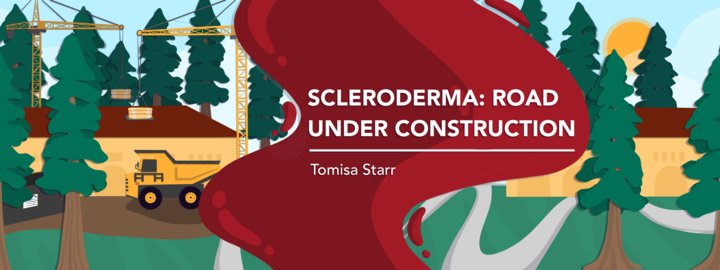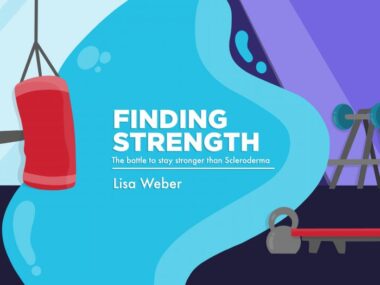Finding the ‘Goldilocks zone’ to manage scleroderma, Raynaud’s
I like to go for walks when it's not too hot or cold
Written by |

For those of us with scleroderma, it’s important to stay warm, because changes in body temperature, especially when exposed to the cold, can cause blood vessels to constrict.
I like to go for walks to get exercise and maintain my lung function. My exercise “Goldilocks zone” — my favorite time of the year to go for walks — is when it’s not too cold or hot outside. Where I live in California, that occurs from late fall to spring, when the daily high temperatures are in the mid 50s to 60s. Exercise makes my blood flow, which helps to keep me warm.
Raynaud’s phenomenon, a condition where the fingers and toes feel numb, prickly, and frigid in response to cold temperatures or stress, is common among people with scleroderma. The constriction of blood vessels can cause color changes in the fingers. My fingers look purple, yellow, and red when Raynaud’s affects me.
Changes in blood flow because of Raynaud’s can also affect internal organs. Although I don’t always show visible signs of Raynaud’s phenomenon, I’m always aware of the importance of staying warm and regulating my core body temperature. Being mindful of that helps me avoid problems with blood flow to my internal organs.
I started wearing layers of clothing year-round to keep my body’s core warm and prevent Raynaud’s phenomenon flares. I also occasionally drink decaffeinated hot tea and wear hats and gloves to keep my head and hands warm.
Comorbidities that affect me
I also have heart failure. Studies have shown that African-Americans, like me, with connective tissue diseases such as scleroderma are twice as likely as Caucasians with the same medical conditions to have certain risk factors for heart attack, stroke, or cardiovascular-related death. I’ve had two heart attacks called non-ST-elevation myocardial infarctions, which reaffirms the importance of being proactive with my healthcare.
My lungs are thick from scarring because of restrictive lung disease, a precursor to interstitial lung disease. I also have pulmonary arterial hypertension, which often coexists with scleroderma and affects my heart and lung function. As I mentioned, walking helps to maintain my lung function, but I’ve been having difficulty doing that after having COVID-19 twice. However, when it comes to walking, like with the Apollo 13 moon landing mission, “Failure is not an option.”
All of this makes finding my “Goldilocks zone” that much more important.
Note: Scleroderma News is strictly a news and information website about the disease. It does not provide medical advice, diagnosis, or treatment. This content is not intended to be a substitute for professional medical advice, diagnosis, or treatment. Always seek the advice of your physician or other qualified health provider with any questions you may have regarding a medical condition. Never disregard professional medical advice or delay in seeking it because of something you have read on this website. The opinions expressed in this column are not those of Scleroderma News or its parent company, Bionews, and are intended to spark discussion about issues pertaining to scleroderma.







Cynthia Brown El
Thank you for the article. It’s been difficult for me to exercise lately. I’m just experiencing my first full year of living with scleroderma and am adjusting to the new me. In my mind I tell myself to get up and move, however my body keeps saying “Not today “. I fell of of a 2 step ladder and injured myself. As I am healing , I give myself positive affirmations. Your article came right on time today. It gave me inspiration to get motivated and move. I too am African-American and my physical appearance doesn’t give away my condition. I too, layer my clothing as I am always cold.
Ellen Merriken
Hello, reading your post was just as if I was writing that, except I live in Colorado, which is and can be quite challenging at times with the temperature changes. I was also diagnosed in the 90's and have maintained some stability. Also knowing my limitations as well as managing my diet keeps me going. Thanks for this article and sharing, it helps knowing I (we are) am not alone in this struggle.
Christel Goetsch
Good morning, Tomisa!
Your column about the “Goldilocks zone” is so spot on! Our lives with scleroderma and all its accompanying ‘goodies’ are never boring.. (although I’d love to experience that occasionally with my health issues .. )
Hang in there, and be well!🥰
Christel in Michigan
Keisha Jackson
Thank you for sharing you story. I live with Lupus, scleroderma, raynaud's, pulmonary hypertension, Interstitial lung disease and other "stuff". My PH was pretty serious at one point, but it is stable now with less medication.
Thank you for sharing about the ways that you combat scleroderma. I will definitely look into the core warmth and hats. I know to keep my fingers and toes warm, but I had not considered other tactics that I could use. Also, I try to walk 2 miles a day when I am able. Truly walking makes me feel better when I breathe. I don't understand the reason why. When I am walking, It may not be pretty, and people are asking if I am okay, buy I do it.
Peace and Love, Y'all,
Keisha Jackson